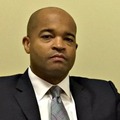Q&A: Enterprise-wide Risk Management Part III
Managing risk accurately and transparently across the entire organization is a huge challenge for all capital markets firms.

Waters gathered together four capital markets sources ─ two representing end-user firms, ANZ and AIA Group ─ and two sponsors ─ Thomson Reuters and GFT ─ to discuss the challenges facing capital markets firms when it comes to designing and implementing enterprise wide-risk management systems. Here are their thoughts...
Click on the relevant links to view Part I and Part II of this four-part Q&A.
Q: What aspects of enterprise-wide risk management do capital market firms tend to underestimate in terms of complexity?
Vijay Aviur, head of risk, global markets and wholesale lending technology for ANZ: Successful ERM implementations have to feature strong support from top management, sufficient resources in terms of cost and trained professionals, expert  knowledge in risk management, and the continued focus on the implementation without losing steam in the middle of the project. For instance, integration of market risk management, credit risk management, liquidity risk management, and operational risk with other "financial" risks is a difficult step, which requires significant effort, time and costs to improve the underlying data management.
knowledge in risk management, and the continued focus on the implementation without losing steam in the middle of the project. For instance, integration of market risk management, credit risk management, liquidity risk management, and operational risk with other "financial" risks is a difficult step, which requires significant effort, time and costs to improve the underlying data management.
A fact that most firms do not realize is that EWRM integrates risk management into activities at all levels of a firm-right from enterprise-level activities such as strategy all the way to business unit processes and technology projects.
Marion Leslie, managing director of Thomson Reuters' pricing and reference services business:
When it comes to enterprise-wide risk management, capital markets firms tend to underestimate the importance of employee ownership and accountability. Anyone in a firm who touches the data required for risk management needs to be aware of 
There needs to be a shift away from siloed management of legacy databases. Firms cannot outsource strategic management of this process, nor can they outsource their ultimate responsibility for understanding the new regulatory environment and ensuring that their data is governed and fit for compliance. Data vendors and service providers can play a key role here, with technology, enterprise usage models and high-quality, connected datasets designed for enterprise use.
Successful ERM implementations have to feature strong support from top management, sufficient resources in terms of cost and trained professionals, expert vijay-aviur-profknowledge in risk management, and the continued focus on the implementation without losing steam in the middle of the project - Vijay Aviur, head of risk, global markets and wholesale lending technology for ANZ.
Drew Wade, senior managing partner, AIA Group: In my experience, setting a mission, strategy and roadmap sets the basis for assessing risks and effectively dealing with them. Firms that set up a foundation and a uniform philosophy may have a faster response time. Equally important is that these firms will have a reliable risk management system in place to provide proper policies to ensure that procedures are efficiently carried out, which can reduce the guesswork for assessing risks and ensure that enterprise-wide compliance is achieved at all times.
In my experience, setting a mission, strategy and roadmap sets the basis for assessing risks and effectively dealing with them. Firms that set up a foundation and a uniform philosophy may have a faster response time. Equally important is that these firms will have a reliable risk management system in place to provide proper policies to ensure that procedures are efficiently carried out, which can reduce the guesswork for assessing risks and ensure that enterprise-wide compliance is achieved at all times.
Ami Grewal, head of business consulting, GFT:
The data. The data is by far and away the biggest thing that everyone seems to assume is really easy. Unfortunately, I've made mistakes myself when I've gone in  on some projects thinking, "This will be easy because how can you not have the data to run your business? You must have the data somewhere."
on some projects thinking, "This will be easy because how can you not have the data to run your business? You must have the data somewhere."
The assumption that you have the data is really bad. The quality of it and the understanding of it is quite disparate. Over the last few years, we've seen a huge amount of churn of people in the banking sector. So the person who knew all about your data last month may have moved across the street. The institutional knowledge is gone, and with it leaving, they don't know their data as well as they should.
Q: How has the current landscape added to the complexity facing the industry when it comes to managing their risk on an enterprise-wide basis?
Grewal: The current landscape in terms of the regulatory change is forcing banks to start to get their acts together to reduce not only front-office risk but back-office risk, too. At GFT, we commissioned a global survey that found that 95 percent of financial firms agree that they are operating in a "new normal" environment of constant, and in fact increasing, regulatory change.
Historically, banks have worked around some of these regulatory challenges tactically rather than fixing them strategically; however, they're now getting to a point where regulatory compliance demands will leave them deficient. They find that the investments they've made are not quite as innovative or strategic as they could have been, so they'll have to look to rebuild to a better solution.
I was speaking with someone the other day who said: "We build things three times. The first time we don't know what we're doing; the second time we think we know what we're doing, but we haven't figured it out; and by the third time we build it, we actually know what we're building."
This doesn't mean that you're spending the same amount on the second or third iterations, but you do have to keep on spending over time. Firms are finding that their regulatory burdens split their attention and resources away from managing enterprise risk, unless they approach compliance in a strategic way.
Wade: The increased regulatory environment, while necessary, in some cases exacerbates the complexities of risk management, particularly for smaller funds and trading operations. For example, firms have to set aside time and resources to train employees on compliance and risk management procedures. Additionally, in order to keep pace with regulators, firms must constantly monitor regulations and new rulings. They must also dedicate resources to maintain documentation and compliance guidelines, which can be expensive. The handling of vast amounts of data, including protecting against cyber-attacks, can place further weight on the firm's resources, especially when taking into account the priority of maintaining a secure platform on a perpetual basis. Of course, innovation is a key to success. However, the reality is that being on the cutting edge increases the complexity of risk management. For example, algorithmic trading operations like the one I manage must innovate to achieve consistent returns that exceed investor expectations.
The final part of this four-part Q&A will be published on October 12.
Only users who have a paid subscription or are part of a corporate subscription are able to print or copy content.
To access these options, along with all other subscription benefits, please contact info@waterstechnology.com or view our subscription options here: http://subscriptions.waterstechnology.com/subscribe
You are currently unable to print this content. Please contact info@waterstechnology.com to find out more.
You are currently unable to copy this content. Please contact info@waterstechnology.com to find out more.
Copyright Infopro Digital Limited. All rights reserved.
As outlined in our terms and conditions, https://www.infopro-digital.com/terms-and-conditions/subscriptions/ (point 2.4), printing is limited to a single copy.
If you would like to purchase additional rights please email info@waterstechnology.com
Copyright Infopro Digital Limited. All rights reserved.
You may share this content using our article tools. As outlined in our terms and conditions, https://www.infopro-digital.com/terms-and-conditions/subscriptions/ (clause 2.4), an Authorised User may only make one copy of the materials for their own personal use. You must also comply with the restrictions in clause 2.5.
If you would like to purchase additional rights please email info@waterstechnology.com
More on Trading Tech
Bloomberg offers auto-RFQ chat feed—but banks want a bigger prize
Traders hope for unfettered access to IB chat so they can build their own AI-enhanced trading tools
TMX launches ATS in US
The move represents the first expansion of the exchange group’s markets business outside of Canada.
AI co-pilot offers real-time portfolio rebalancing
WealthRyse’s platform melds graph theory, neural networks and quantum tech to help asset managers construct and rebalance portfolios more efficiently and at scale.
Opra considers ‘dynamic load balancing’ for options market
The data distributor recently completed a challenging project to build a 96-line feed. This new endeavor could prove just as challenging (but perhaps necessary) for the industry that will use it.
Big questions linger as DORA compliance approaches
The major EU regulation will go live tomorrow. Outstanding clarifications and confusion around the definition of an ICT service, penetration testing, subcontracting, and more remain.
Market data for private markets? BlackRock sees its big opportunity
The investment giant’s CEO said he envisions a far bigger private market business in 2025.
8 bank CTOs and CDOs sound off on artificial intelligence
Waters Wrap: Last year, WatersTechnology spoke with heads of technology and data from a range of tier-1 banks. Anthony pulls at one common thread from those interviews: AI.
Artificial intelligence, like a CDO, needs to learn from its mistakes
The IMD Wrap: The value of good data professionals isn’t how many things they’ve got right, says Max Bowie, but how many things they got wrong and then fixed.








